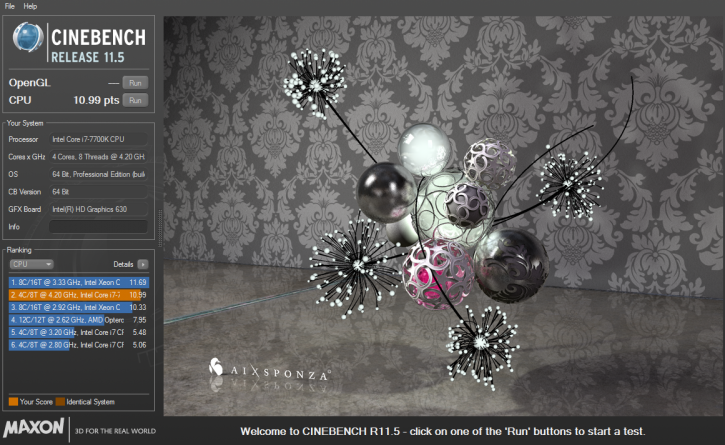Performance Content Creation & Transcoding
Transcoding
x.264 is a free library for encoding H.264/MPEG-4 AVC video streams. Encoding/transcoding to that format is one of the most intensive tasks a processor can perform and needs to access system memory to do so. We encode a h.264 Dolby Digital 1080P trailer of 150 MB to Matroska x.264 with 5.1 channels AC3. This software is a perfect benchmark for CPU and memory testing as it is very sensitive to multiple cores and memory frequency. The displayed number is the number of frames rendered per second averaged out over the encoding process. The higher the number, the faster the performance is.
So here's a good school example of the fact that faster and quad-channel clocked memory is not always that much faster overall. The differences are small. BTW we moved the memory from the X299 platform towards Z270 to be able to compare it with previous resutls.
CineBench
CINEBENCH is a real-world cross platform test suite that evaluates your computer's performance capabilities. CINEBENCH is based on MAXON's animation software CINEMA 4D, which is used extensively by studios and production houses worldwide for 3D content creation. MAXON software has been used in blockbuster movies such as Spider-Man, Star Wars, The Chronicles of Narnia and many more. This test scenario uses all of your system's processing power to render a photorealistic 3D scene (from the viral "No Keyframes" animation by AixSponza). This scene makes use of various different algorithms to stress all available processor cores.
This software has been added to the test suite starting this very review (hence the lack of more results) It can measure systems with up to 64 processor threads which makes it rather future proof for testing. The Cinema 4D engine also has a yearning thirst for HyperThreading and thus will be in favor of Intel processors that can hyper-thread. The test scene contains approximately 2,000 objects containing more than 300,000 total polygons and uses sharp and blurred reflections, area lights and shadows, procedural shaders, antialiasing, and much more. The result is given in points (pts). The higher the number, the faster the processor.
It's clear that the test is not rather memory bound.
Now this is a CPU test for 90%, but it uses system memory. Realistically in-between 2,133 MHz and 3,000 MHz we can measure a tiny bit of difference, but not something you would ever notice it in real world perf. Inbetween dual and quad channel... again very little.




